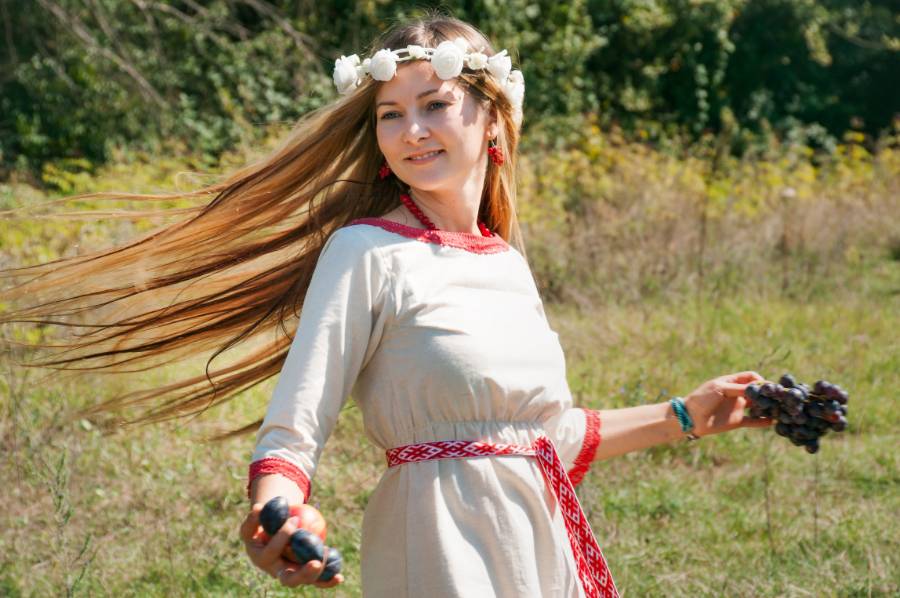Feeling happy and secure in a relationship requires a good balance between independence and neediness; however, clinginess can get in the way of achieving this. When one partner becomes too clingy,it can lead to feelings of resentment,frustration, and insecurity.
It is important to recognize clingy behavior and discuss it with your partner in a healthy way.
Clingy behavior can range from being overly dependent to being too demanding, and can be expressed in different ways.
By understanding what it looks like and how to manage it, couples can create a secure and lasting connection.
The Meaning of Clingy in a Relationship
Clingy Defined
The term ‘clingy’ can bring up different connotations for different people,but in general it refers to the need for physical or emotional attention from one’s partner. Most relationships require a certain level of closeness, but too much clinginess can have a negative effect on a relationship.
Clingy behavior can range from excessive texting,calling or physical contact,to an overall sense of needing to be around the other person constantly.
While it can be tempting to dismiss clingy behavior, it’s important to take a closer look at the underlying cause.
Clinginess is often rooted in anxiety or insecurity and understanding this can be the key to addressing it.
From my experience as a relationship coach, I’ve found that learning to ask for what we need, being able to compromise, and finding a balance between closeness and independence can foster healthy,lasting relationships.

Common Signs of Clinginess
- In relationships,it’s only natural to feel secure and connected to your partner.
- However, it’s possible to feel so secure that you become overly reliant on them, which is known as clinginess.
- Clingy behavior can manifest in different ways such as relying on your partner for emotional support,always wanting to be in close physical proximity, and displaying signs of jealousy when the attention isn’t focused solely on you.
To ensure a healthy relationship,it’s important to be aware of the signs of clinginess so you can address them before they cause deeper issues.
Understanding what clinginess looks like can also help identify if a partner is exhibiting this behavior, as well as help you figure out how to manage it.
Recognizing Clingy Behavior in Yourself
Identifying Triggers for Neediness
When it comes to navigating our relationships,understanding when our partner is feeling too clingy can be difficult. Clingy behavior can be linked to different issues such as low self-esteem, different attachment styles and difficulty with emotional regulation.
These issues can come from our past and can be subtle, so it can be helpful to become more aware of our own feelings and triggers.
One tip that can be helpful is to take a step back and observe the situation objectively. Ask yourself if you’re feeling anxious or insecure, or if you’re expecting too much from your partner, and be honest with yourself.
This will help you to identify the root of your clingy behavior and start to work on it.
Additionally, talking through your issues with a therapist or counsellor can be a great way to gain a better understanding of yourself and your clingy behavior,and to take the necessary steps to create healthier relationships.
Finding Internal Solutions
Understanding why you may be feeling clingy in a relationship can be difficult,but it doesn’t have to be. Clinginess is often the result of feeling insecure or needing more emotional support than the other person is willing to give.
It can also be a sign of fear of abandonment,or a sign of low self-esteem.
It’s important to take the time to understand why you’re feeling clingy, and to make sure your needs are being met.
Developing your sense of self-worth can be incredibly beneficial in this regard,and can be achieved by engaging in self-care practices and revisiting goals that make you feel good about yourself.
Additionally, it’s important to practice relaxation techniques,talk to someone you trust,and carve out time for yourself in order to maintain your independence.
With these in mind,it’s possible to build a secure and lasting relationship based on trust,openness,and mutual respect.

Recognizing Clingy Behavior in Your Partner
Talking Openly With Your Partner
Being in a healthy,happy relationship means understanding each other’s needs and being open to communicating about them. Unfortunately, clinging behaviors can often make it difficult for couples to communicate effectively. To make sure this doesn’t happen,it’s essential that you talk openly and honestly about any issues that arise.
Start by listening to your partner and acknowledging their feelings. You should then explain your own perspective and offer solutions that can help you both come to a compromise.
Being honest and expressing what triggers your partner’s clinginess can help develop better understanding,trust,and security in the relationship.
If your partner’s clingy behavior is rooted in past traumas or anxieties,consider seeking professional help to address the underlying issues and create a more balanced relationship.
It’s important to remember that a little clinginess can be healthy in relationships, and understanding the line between comfort and insecurity will help you both.
Identifying Your Partner’s Triggers
- In order for a relationship to be healthy and successful,it is important to understand the source of your partner’s clingy behavior.
- Ask your partner directly what they need to feel more secure, and be open to listening.
- If it is related to their previous relationships, discuss how their behavior might need to change.
However, if the clinginess is linked to an underlying psychological issue,it may be beneficial to seek professional help.
Identifying the root cause of your partner’s clinginess is a key step in fostering a healthier and more balanced relationship.
Ways to Balance Clinginess in Relationships
Making Time for Independent Activities
Many relationships thrive on the mix of security and independence, but too much of either can create a rift between couples. The only way to achieve this balance is to understand what clinginess means in a relationship and learn how to respect your individual needs and those of your partner.
When you are in a relationship it can sometimes feel like you need to give up your hobbies and passions and fully invest in the relationship.
But this is neither healthy nor sustainable. Finding a balance between the two is key – and that means maintaining a sense of independence both for you and for your partner.
This will look different for each couple,but the key is making sure that you both have enough space to pursue your individual interests.
- Creating and respecting boundaries is essential for a happy and healthy relationship.
- Establishing clear boundaries with your partner helps ensure that you don’t become overly dependent on them and that they don’t become overly dependent on you.
- Respect these boundaries and honour them even when it’s difficult.
Making time for yourself and for activities that bring you joy and fulfilment is also key. This will help you recharge and redirect your energy away from the relationship when it gets overwhelming.
Scheduling time for yourself in advance allows you to plan activities without feeling guilty,and it can also help to make sure that you and your partner don’t overstep boundaries.
Creating a balance between dependency and independence in a relationship takes time, but is worth the effort in the long run.
Open communication and respect of boundaries are essential for maintaining this balance,and making time for yourself can help you relax and recharge.
Engaging in Mutual Self-Care
As a relationship coach,I know that engaging in mutual self-care is essential for any relationship. Taking time to remember what it means to truly care for each other, to nurture each other,is the key to creating a meaningful connection.
- One of the most important aspects of mutual self-care is taking the time to listen and understand each other’s needs.
- This could mean having a coffee date every week, where both members of the couple have time to just talk and be present with each other.
- It could also involve doing something together, such as going for a stroll,playing a game, or just watching a movie.
Another aspect of mutual self-care is doing thoughtful things for each other. This could be as simple as making dinner, sending a sweet message,or doing a chore your partner dislikes.
Even the smallest of gestures can show your partner that you care for them and are willing to put in the effort for their happiness.
Finally, it’s important to learn how to have difficult conversations in a respectful and supportive manner. Be honest with your partner,but be aware of the words you choose. Communication can only be successful if it is done in a way that is not hurtful or spiteful.
All in all, engaging in mutual self-care requires effort and dedication, but it’s worth it in the end. It can be the difference between a healthy, secure relationship and one where both partners feel unheard and unappreciated.

Changing Your Clingy Behavior
Exploring and Expressing Emotions
Have you ever felt like your partner was too clingy? It’s a common concern in relationships and one that can cause feelings of insecurity,or simply feel smothering. But if you take the time to explore and express your emotions, you can create a strong,secure bond with your partner without feeling overly dependent.
When we take the time to explore our emotions, it helps us to identify what we are actually feeling and what might be causing our distress – whether that be insecurity or something else.
Being mindful of our own thoughts and recognising subtle nuances in our body language can tell us a lot about how we are feeling.
- Rather than shying away from these emotions, it’s important to express them to your partner.
- Having the courage to be vulnerable with your partner and to articulate how you’re feeling can create a deeper connection and greater understanding between you.
Exploring and expressing your emotions is a skill that takes practice but is well worth the effort.
By taking the time to work through our feelings,we can create healthier attachments with our partner without feeling too dependent. Doing this can help us create happiness and security in our relationships for the long run.
Breaking Patterns of Dependence
- Watching out for signs of clinginess in a relationship is key to maintaining a happy and healthy bond with your partner.
- Clinginess can manifest itself in various forms, from needy behavior to excessive need for validation and reassurance.
- Unfortunately,it can be easy to fall into patterns of clinginess in a relationship,but by being mindful and communicating regularly with your partner,it’s possible to break away from these patterns and create healthier attachments.
Building a strong foundation of trust and understanding is a crucial step in overcoming clinginess. It’s important to set clear boundaries and be honest and transparent with your partner,while also allowing them their autonomy and independence.
A healthy balance between independence and dependence is essential,as too much reliance on the other person can create feelings of resentment and distance.
It’s also helpful to practice intentionality in your relationship. When we practice non-attachment,we accept that not everything is in our control, and learn to cope with uncertainty while remaining present in the moment. This can help reduce fears of abandonment and foster more security in the relationship.
Breaking away from clingy patterns can be difficult,but it’s essential to building strong and lasting relationships. With the right combination of understanding,communication,trust and autonomy,it’s possible to create healthy and happy connections with your partner.
Conclusion
When it comes to relationships,clinginess is often treated as a negative trait to be avoided. But it’s important to remember that while it can be uncomfortable and draining,there is no ‘right’ or ‘wrong’ level of clinginess.
Instead,the key to maintaining a healthy relationship lies in discovering what clingy behavior looks like,understanding what triggers the neediness and communicating openly with your partner.
By being aware of your attachment style and being respectful of your partner’s needs, you can foster a secure connection that allows you to openly express your love while also maintaining your independence.










